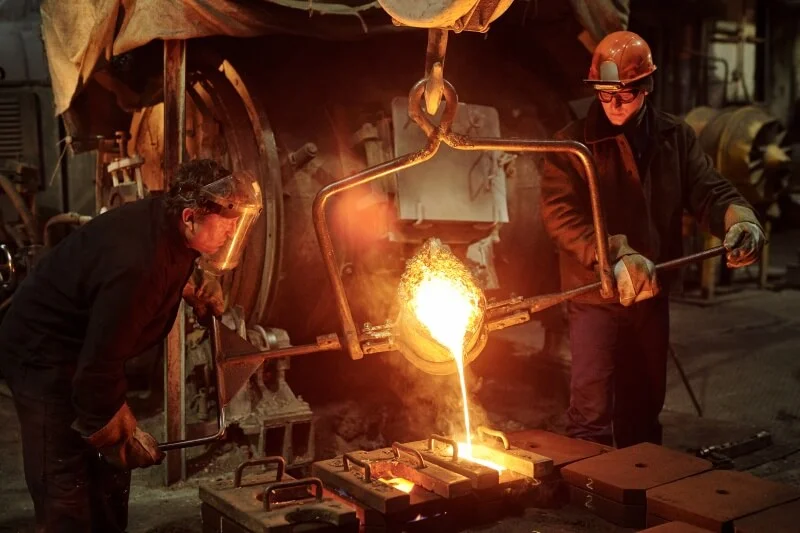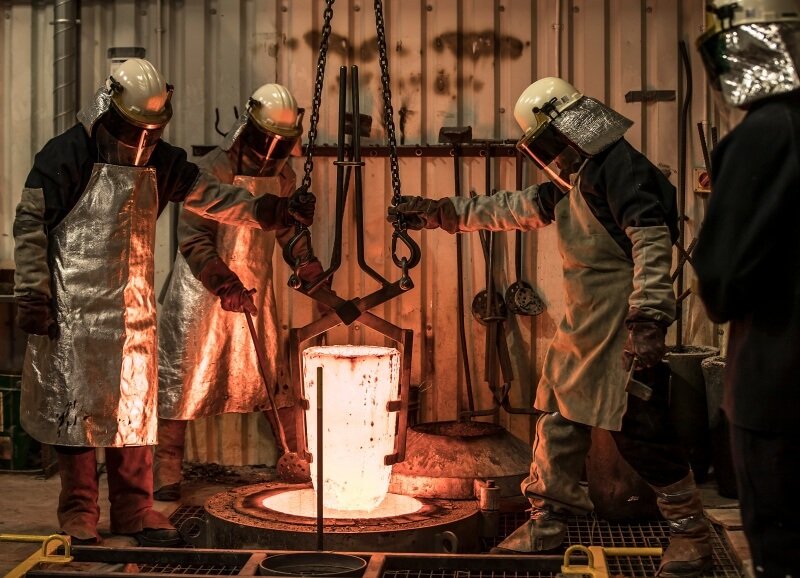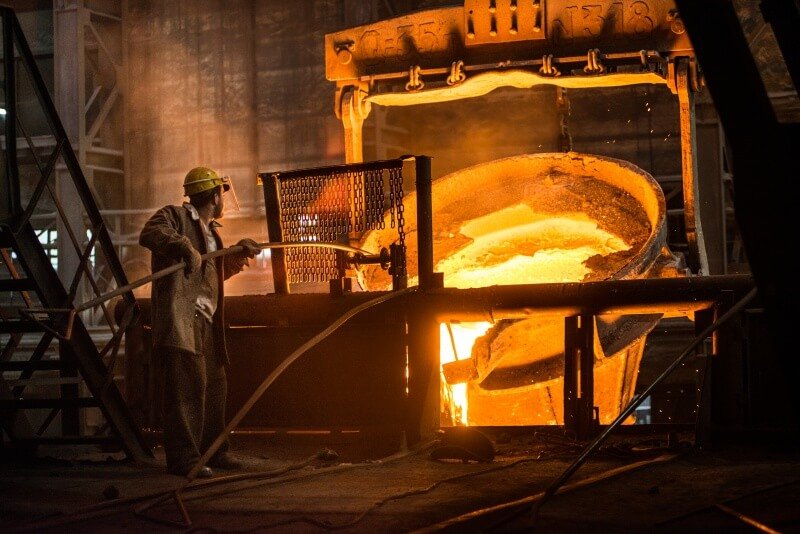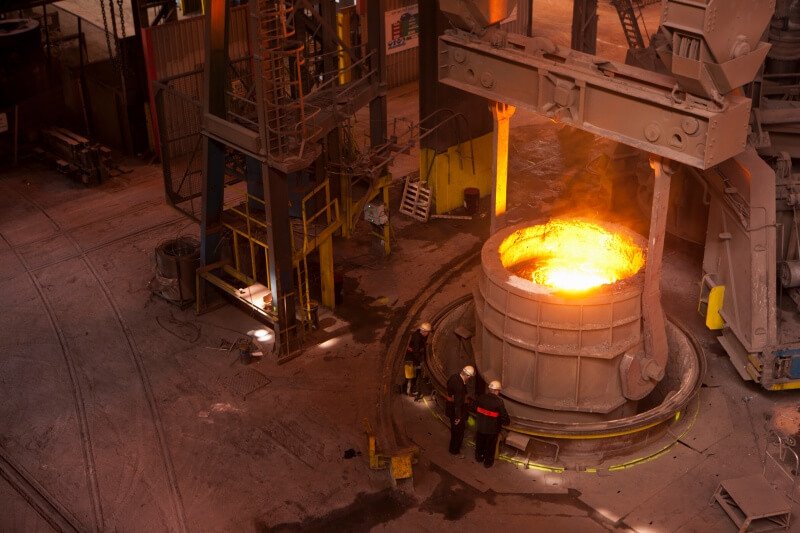Manufacturers constantly face the challenge of sourcing metal parts that combine strength, dimensional accuracy, and cost efficiency. Relying on weaker options like aluminum often undermines design integrity, while alternative processes can drive up tooling expenses and extend production cycles, ultimately delaying market readiness. Zinc alloy die casting provides a reliable answer, offering superior strength, faster turnaround, and outstanding value for creating intricate, high-performance components at scale.
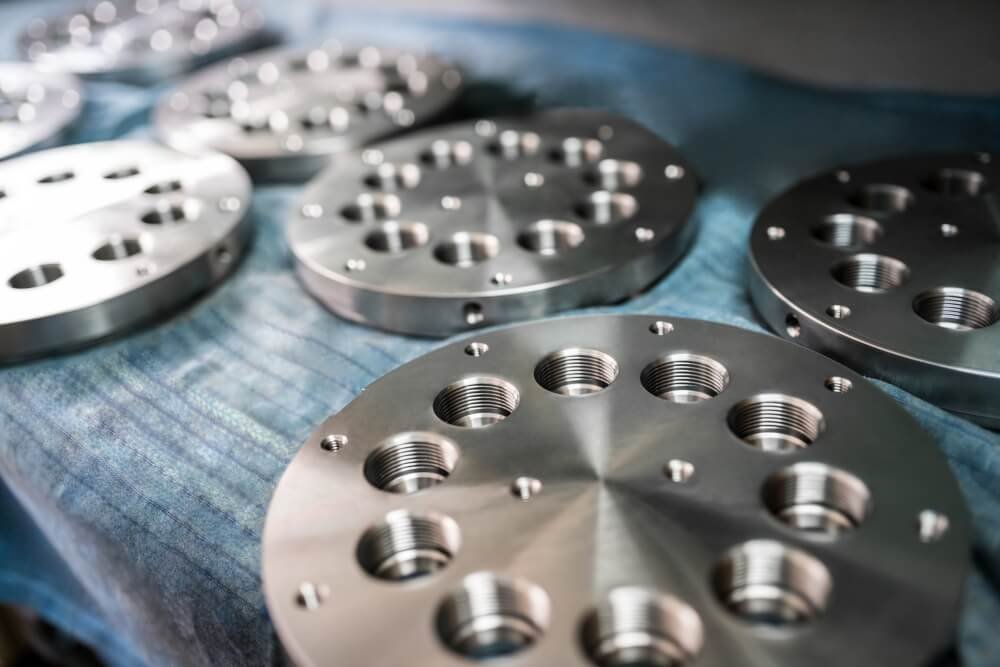
An Intro to zinc alloy die casting
What is the core process?
The core of this method involves melting zinc alloys and injecting them into a steel mold under high pressure, a technique known as the hot-chamber process. This approach is perfectly suited for zinc’s low melting point, enabling rapid and efficient part creation. The process ensures you get high-quality, net-shape parts with every cycle.
Here’s how it works:
- A furnace melts the zinc alloy.
- The molten metal is forced into a die cavity.
- The part solidifies rapidly before being ejected.
Why is die preparation important?
Before injection, the die must be meticulously cleaned and lubricated to guarantee a high-quality final product. This preparation prevents surface impurities and ensures the cast part can be ejected smoothly without damage. Proper die maintenance is critical for process consistency and part quality.
You might be wondering:
- Does it improve part quality? Yes, it prevents defects.
- Does it make ejection easier? Absolutely.
- Does it extend the die’s life? Yes, by reducing wear.
How does injection and cooling work?
Molten zinc is forced from a shot chamber into the die cavity under intense pressure, filling every detail of the mold. The part then cools and solidifies very quickly before being ejected and trimmed of any excess material. This rapid cycle is what makes zinc alloy die casting so efficient for high-volume production.
The bottom line is:
- High-pressure injection fills the mold completely.
- Rapid cooling sets the part’s final shape.
- Ejection and trimming finalize the component.
Key Takeaway: The hot-chamber process for zinc is inherently faster and less demanding on tooling than cold-chamber processes used for other metals.
| Step | Action | Purpose |
|---|---|---|
| 1. Preparation | Clean & Lubricate Die | Ensure Quality & Easy Ejection |
| 2. Injection | Inject Molten Zinc | Fill Mold Cavity Rapidly |
| 3. Cooling | Solidify in Mold | Form the Part’s Shape |
| 4. Ejection & Trim | Remove & Finish | Finalize the Component |
This structured process ensures high-speed, repeatable production of net-shape parts.
Benefits of zinc alloy die casting
How is it stronger than aluminum?
Zinc alloys possess significantly greater mechanical strength, toughness, and firmness compared to aluminum alloys. In fact, standard zinc casting alloys offer approximately 2.5 times the yield strength of common aluminum alloys. This superior strength allows you to design more durable and robust components.
Let’s break it down:
- Yield Strength: Zinc is ~2.5x stronger.
- Toughness: Zinc offers better impact resistance.
- Hardness: Zinc provides superior wear resistance.
Can it create complex geometries?
Yes, zinc’s excellent casting fluidity and wear-resistant properties make it ideal for creating intricate structures and parts that are in constant motion. Its ability to fill complex mold cavities allows you to form joints, bosses, and other features directly into the part. This simplifies design and reduces the need for secondary assembly.
Think about it this way:
- It’s great for parts with thin walls.
- It’s perfect for components needing high precision.
- It enables the consolidation of multiple parts into one.
Key Takeaway: Zinc’s inherent strength and fluidity allow for the creation of durable, intricate parts that are not feasible with other common alloys.
| Property | Zinc Advantage | Application Benefit |
|---|---|---|
| Strength | ~2.5x stronger than Aluminum | More durable parts |
| Fluidity | Fills complex molds easily | Enables intricate geometries |
| Wear Resistance | Excellent bearing properties | Ideal for parts in motion |
These properties make zinc the superior choice for components requiring both structural integrity and design complexity.
More zinc alloy die casting pros
How does it speed up production?
The low melting point of zinc allows for a hot-chamber process, which enables cycle rates that are 150-200% faster than those for aluminum. Direct injection and a high solidification rate mean more parts can be produced in less time. This speed advantage significantly lowers the cost per part in high-volume runs.
Here’s the deal:
- The hot-chamber process is faster.
- Direct injection eliminates transfer steps.
- Rapid cooling shortens cycle times.
Does the tooling last longer?
Yes, the molds used for zinc alloy die casting last significantly longer—often up to 10 times longer—than those used for aluminum. Zinc’s lower melting point and less abrasive nature cause much less wear and tear on the steel dies. This longevity reduces your long-term tooling costs and minimizes production downtime.
What does this mean for you?
- Zinc Molds: Last for millions of cycles.
- Aluminum Molds: Wear out much faster.
- Result: Lower overall tooling investment.
Key Takeaway: Zinc alloy casting offers significant economic advantages through faster production cycles and dramatically increased tool longevity.
| Factor | Zinc Die Casting | Aluminum Die Casting |
|---|---|---|
| Cycle Rate | 150-200% Faster | Slower |
| Tool Life | Up to 10x Longer | Shorter |
| Process | Hot-Chamber (Direct) | Cold-Chamber (Indirect) |
The combination of speed and tool life makes zinc highly cost-effective for high-volume production.
Zinc alloy die casting materials
What are the common Zamak alloys?
The Zamak family of alloys are the workhorses of zinc casting, offering a balance of desirable properties. Zamak 3 is the most popular choice due to its excellent dimensional stability and suitability for various finishes. For parts requiring maximum strength and hardness, you would turn to Zamak 2.
It gets better:
- Zamak 3: Great for general-purpose use and finishing.
- Zamak 2: The strongest and hardest of the family.
- Zamak 7: Offers high ductility and superior finish quality.
What about ZA and other alloys?
Beyond Zamak, you have access to zinc-aluminum (ZA) alloys and other specialized formulations for demanding applications. ZA-8 is unique because it’s compatible with the hot-chamber process, while ZA-27 offers high strength in a lightweight package. Specialty alloys like ACuZinc5 are designed for high-stress, high-temperature environments.
But that’s not all:
- ZA-8: Hot-chamber compatible and strong.
- ZA-27: A high-aluminum alloy that is strong and light.
- ACuZinc5: Delivers excellent creep resistance.
Key Takeaway: A wide range of zinc alloys is available, allowing for material selection to be optimized for specific needs like strength, finish, or castability.
| Alloy Family | Key Characteristic | Best For |
|---|---|---|
| Zamak | Balanced properties | General purpose, finishing |
| ZA (Zinc-Aluminum) | High strength, lightweight | Structural components |
| ACuZinc/EZAC | High performance | Demanding, hot environments |
Choosing the right alloy is critical to balancing performance requirements with manufacturing goals.
Design with zinc alloy die casting
Can it form thin-walled parts?
Yes, the exceptional strength and fluidity of zinc alloys allow you to cast strong parts with very thin walls. This reduces both material usage and overall part weight compared to what would be required with aluminum or plastic. You can achieve complex, lightweight designs without compromising structural integrity.
Now, consider this:
- You use less material per part.
- The final component is lighter.
- It lowers your overall part cost.
How does it enable easy assembly?
Die casting produces a single, net-shape component, which often eliminates the need for any secondary assembly operations. Features like bosses, studs, threads, and mounting points can be cast directly into the part. This simplifies your bill of materials and streamlines the entire production workflow.
The real advantage is:
- Fewer individual parts to manage.
- Reduced assembly time and labor costs.
- A simpler, more efficient supply chain.
Key Takeaway: Zinc die casting empowers designers to create lightweight, complex, single-unit components, streamlining both the part itself and the overall assembly process.
| Design Feature | Zinc Advantage | Outcome |
|---|---|---|
| Thin Walls | High strength in thin sections | Material and cost reduction |
| Net-Shape Casting | Part is cast as a single unit | Reduced assembly time/cost |
| High Precision | Excellent dimensional stability | Tighter tolerances |
These design freedoms make zinc ideal for optimizing both product performance and manufacturing efficiency.
Finishing zinc alloy die casting
What finishing options are there?
Zinc die-cast parts provide a perfect surface for a wide variety of finishing options, enhancing both appearance and function. You can choose from painting, powder coating, and various types of plating to achieve the desired look and performance. This versatility allows you to customize parts for any application.
Here are your options:
- Painting: Cost-effective and offers a wide color range.
- Powder Coating: Provides a durable, uniform, and colorful finish.
- Plating: Adds functional and decorative metallic layers.
How does plating improve parts?
Plating is used to significantly enhance the functional attributes of a zinc part, such as its corrosion resistance and durability. It can also provide a premium metallic finish for aesthetic purposes, with options like chrome, nickel, and brass. This makes your components more robust and visually appealing.
Look at it this way:
- It boosts corrosion and wear resistance.
- It provides a high-end decorative finish.
- It increases the part’s overall durability.
Key Takeaway: Zinc die-cast parts are compatible with a wide array of finishing options, allowing for significant improvements in both appearance and durability.
| Finish Type | Primary Benefit | Best Use Case |
|---|---|---|
| Plating | Functional (Corrosion/Durability) | Harsh environments, high wear |
| Powder Coating | Aesthetic & Durable | Colorful, uniform finishes |
| Painting | Aesthetic & Cost-Effective | Quick, colorful applications |
The right finish transforms a raw part into a production-ready component tailored for its end-use environment.
Using zinc alloy die casting parts
Where is it used in automotive?
In the automotive industry, zinc alloy die casting is prized for its strength and is commonly used for interior and engine components. You will find it in parts where durability is more critical than light weight. This includes everything from small gears to structural housings.
For example:
- Bearings and bushings.
- Steering and brake system components.
- Interior parts like door handles and lock mechanisms.
What about electronics & home use?
Zinc’s excellent dimensional stability and high-quality finish make it a perfect choice for consumer electronics and home appliances. It is used to create parts that require precision, a solid feel, and a premium appearance. You interact with zinc die-cast parts every day without even realizing it.
It’s not just for cars:
- Electronics: Energy regulators, switches, and heatsinks.
- Home Goods: Door locks, faucet handles, and furniture inserts.
- Consumer Products: Belt buckles and zippers.
Key Takeaway: Zinc’s versatility makes it a go-to material across multiple industries, from high-strength automotive components to precise electronic housings.
| Industry | Example Parts | Key Property Leveraged |
|---|---|---|
| Automotive | Bearings, Steering Components | Strength & Hardness (Zamak 2) |
| Electronics | Regulators, Switches | Dimensional Stability (Zamak 3) |
| Consumer Goods | Door Locks, Handles, Buckles | Strength & Finish Quality |
The widespread application of zinc parts is a testament to their balanced performance and manufacturing advantages.
Limits of zinc alloy die casting
Why are the finished parts heavy?
The primary trade-off with zinc is its high density, which makes parts heavier than those made from aluminum or magnesium. This weight makes zinc less suitable for applications where minimizing mass is the top priority. This is a key reason why it is less common in the aerospace industry.
Here’s the tradeoff:
- Zinc: Strong but heavy.
- Aluminum: Lighter but weaker.
- Magnesium: Very light but more costly.
What common defects can occur?
The high speed of the injection process and the rapid cooling can sometimes trap gas within the mold, leading to defects. These can include porosity (small internal voids) or surface blisters. Proper part and mold design are crucial to minimizing these potential issues.
But be aware:
- Porosity can reduce a part’s structural integrity.
- Blisters can affect the surface finish.
- Parts with porosity cannot be heat-treated.
Key Takeaway: While strong and precise, zinc casting’s main limitations are the weight of the parts and its unsuitability for low-volume production.
| Limitation | Cause | Implication |
|---|---|---|
| Heavy Parts | High density of zinc | Not ideal for lightweighting |
| Potential Defects | Rapid cooling traps gas | Reduced quality if not controlled |
| High Initial Cost | Expensive tooling (molds) | Not cost-effective for small batches |
Understanding these limitations is crucial for determining if zinc die casting is the right choice for a project.
Conclusion
Zinc die casting solves the challenge of producing strong, intricate, and durable metal parts quickly and cost-effectively at scale. At Precisionvast, we deliver high-tolerance, custom zinc die-cast parts with competitive pricing and fast lead times. Our vision is to empower innovators by making professional-grade, on-demand manufacturing accessible, fast, and seamless, so if you are ready to leverage the strength and speed of zinc, upload your CAD file now to get an instant quote and a free DfM report.
FAQ Section
Q1: How do I know if zinc is better than aluminum for my part? Choose zinc if your priority is strength, complex geometry, or long tool life for high-volume production; choose aluminum when light weight is your most critical requirement.
Q2: Can I get a specific color or finish on my zinc parts? Yes, zinc parts are ideal for a wide range of finishes, including painting, powder coating, and plating, which allow for virtually any desired color or aesthetic.
Q3: What’s the biggest mistake to avoid in zinc part design? A key mistake is failing to design for the process by creating features like sharp internal corners or uniform wall thicknesses that can trap gas or cause filling issues, leading to defects.
Q4: Will my zinc die-cast parts rust over time? No, zinc has excellent natural corrosion resistance and will not rust, even in harsh conditions, making it superior to many other metals in this regard.
Q5: Is it possible to weld a broken zinc die-cast part? It is very difficult and generally not recommended due to zinc’s low melting point, which can cause the part to deform or melt during the attempt.

